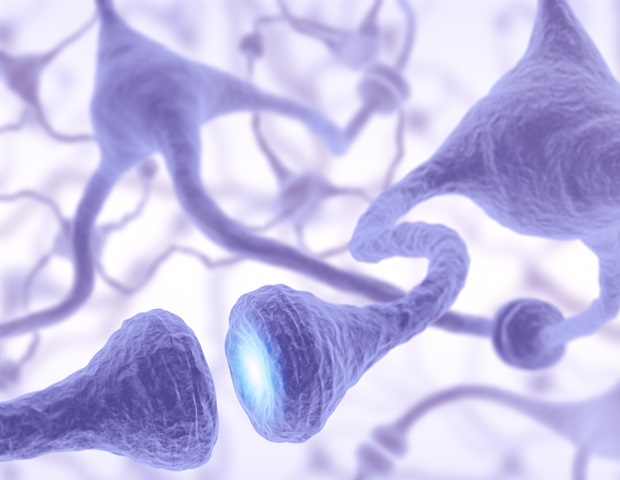A new publication of Opto-electronic advances; DOI 10.29026 / Oea.2025.240152, explains how the multi-photo bionic skin achieves high precision haptic visualization for reconstructive perception.
Human palm skin contains more than 20,000 tactile vesicles, depending on the tactile vesicles in the depth of the skin, the activation threshold, the start -up and other differences in tactile signal collection, as well as the mechanism Trans-synergist between them, so that the skin can obtain different types of touch signals. And then through the brain of the central brain on the tactile treatment of the “calculation” of the signal, can realize that the object is more complete and more specific to perception capacity, and can even achieve the perception of tactile visual reconstruction, C ‘that is to say, depending on the tactile structure of objects, form, texture and other characteristics of the visualization of perception. Inspired by this mechanism of tactile perception of human beings, the touch sensors that simulate the function of human skin have attracted great attention. Until now, electrical sensors based on the principles of resistance, piezoelectricity and friction electricity have been able to imitate the touch nerve to collect and process physical information by monitoring the change in the electrical outlet signal during the process during the process contact.
However, electric touch sensors also have problems such as potential leaks, easy to corrode, and not resistant to electromagnetic interference, low sensitivity, at a slow response speed. On the other hand, the use of optical averages as a information carrier to carry out tactile detection becomes an optional and ideal technological path, which has been demonstrated in fiber optic sensors of multi-physical parameters.
Aiming the above problems, the team of the associated researcher Yu Yang of the micro-nano optoelectronics and intelligent perception group of the national university of defense technology proposed an optical microfiber network skin (OMAS) for the recognition of the form D ‘object in the interaction of human computers. This OMAS uses a longitudinal and transverse four-way micro-nanosstructure to successfully simulate the human finger or subcutaneous multifunctional tactile receivers and performs the synergistic effect of multi-tactile receptors in several tactile methods. To further achieve the perception capacity of the visual reconstruction of multimodal touch of human type, the team integrated OMAS into the intelligent signal-developed intelligent processing module and has simulated the processing of the human brain of bioelectric signals using algorithms of ‘Automatic learning such as the fully connected neural network fully connected -FCNN, which produced the multifunctional mechanism for perception and spatial reconstruction of the characteristics of the object such as the shape, the hardness, the surface texture, etc.
Thanks to experiments, the team has shown that OMA can be used as a bionic flexible touch skin for robots, that is to say, it acts as a multifunctional tactile receiver. As shown in Figure 2, by analyzing the static pressure data, the OMA can feel very well the softness, the hardness and the shape of the contact objects (press the recognition of six common objects with 100%precision). As shown in Figure 3, by analyzing the characteristics of the dynamic pressure tactile signals, the OMA can identify with precision the material and the surface texture of the objects in contact (the accuracy of recognition of ten tissues is as high as 98.5 %, and the success rate of recognition of ten figures from 0 to 9 in international common braille reach 99%). As proof of concept, the team has integrated the OMA into a robotic hand, successfully identified the Mahjong between several different objects and achieved the recognition of costumes and the perception of the reconstruction of Mahjong. This effectively verifies the advantage of vector tactile perception of this multi -piping bionic skin, which is important to support the detection of 3D complex textures on the surface of the objects, and even to carry out tactile visualization and the perception of reconstruction.
Tactile receptors based on multi-photon bionic skin developed by the authors of this article have the capacity to imitate the capacity of human skin to feel static and dynamic pressure, and are capable of precisely characterizing the form, hardness And the complex texture of objects, which, which applies to the fields of intelligent portable devices, robotic tactile detection and virtual reality, among others. This technology provides a new solution for the intelligent interaction of human computers and promotes the application of touch sensors in the field of portable devices and robotic intelligent perception. Thanks to a subsequent development of multi-media touching skin detection technology, the team will focus on improving its application capacity in complex environments such as submarine and space, with a view to its wide application in The areas of mixed reality interaction control, marine scientific research, and exploration of deep space.
Source:
Journal reference:
Zhou, H., and al. (2025). Bionic skin integrated into multi-photon neurons for the search for perception of complex texture and reconstruction of high precision objects. Opto-electronic advances. DOI.org/10.29026/OEA.2025.240152.


